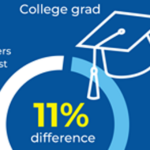What makes a school good?
The outward signs are relatively simple, at least the ones commonly relied upon by teachers deciding where to work and parents deciding where to send their children. They look for high test scores, positive word-of-mouth, and community involvement. And as anyone concerned with the future of urban education knows, several generations of engaged parents and teachers have consistently opted for suburban schools, which regularly outpace their urban counterparts on these indicators.
Yet this is in many ways a self-fulfilling prophecy — because engaged adults bring to schools the energy, skills, and resources that ultimately generate high test scores, positive word-of-mouth, and community involvement.
As such, we have a chicken-and-egg problem in the quest for quality schooling. Some schools, many of them in the suburbs, possess the qualities that attract engaged adults who, in turn, promote the things that appealed to them in the first place. Other schools, many of them in cities, lack the qualities that would draw those whose absence makes it virtually impossible to send the “good school” signal. How, one must wonder, can we interrupt this?
Engaged parents and teachers want to cluster together in resource-rich hot spots.
For several decades, school reformers have worked to manipulate indicators of quality as a means of attracting parents and teachers to schools. They’ve pushed, for instance, to raise test scores without changing populations or interfering with parental choice. In fact, parents have been given even more control through intradistrict choice schemes and the creation of open-enrollment charters. Experienced teachers, similarly, continue to exert great control over where they teach (PDF), working hard to keep that in collective bargaining contracts.
The upshot of all this is that schools continue to sort out in a bimodal distribution, with engaged parents and teachers clustering together in resource-rich hot spots.
So, how do you get the most quality-conscious parents and teachers into the schools that need them most?
I’ve suggested some ideas elsewhere, including re-branding public schools as “charters,” since charters seem to poll so well and have such good press these days. But there are other options, one of which is using crowd-sourcing technology.
What would this look like? Consider a platform like Kickstarter, where project backers make financial pledges knowing that a venture will either reach its funding target or be withdrawn from consideration. In other words, funds don’t flow until they reach a tipping point, so no individual risks funding a nonstarter. In a school-based application, parents in particular neighborhoods could indicate which schools they’re willing to send their kids to, provided that a critical mass of other parents, as well as a mass of experienced teachers, were willing to move with them. If they reached their target, they could move as a resource-rich bloc to a new school, potentially benefitting all students in the process.
Why might this work? Because a new generation of urban parents is committed to staying in cities. And though they’re quality-conscious, they aren’t seeking lily white schools. In fact, many see diversity as a strength of city living. Thus, while efforts to bring them into low-performing schools might pose some challenges, infusing those schools with new resources promises far more upsides than downsides. After all, there’s plenty of social and financial capital to go round. Yet, as things are, those resources are spread intolerably thin in some schools and piled so deep in others that they often go to waste. We can allocate what we have in a manner that is more fair, more just, and more efficient. We just have to think creatively.
ABOUT THE AUTHOR

Jack Schneider
Jack Schneider is an associate professor of education at the University of Massachusetts, Lowell; co-founder of the Massachusetts Consortium for Innovative Education Assessment; and the director of the Education Commonwealth Project. He is the author of A Wolf at the Schoolhouse Door: The Dismantling of Public Education and the Future of School.










